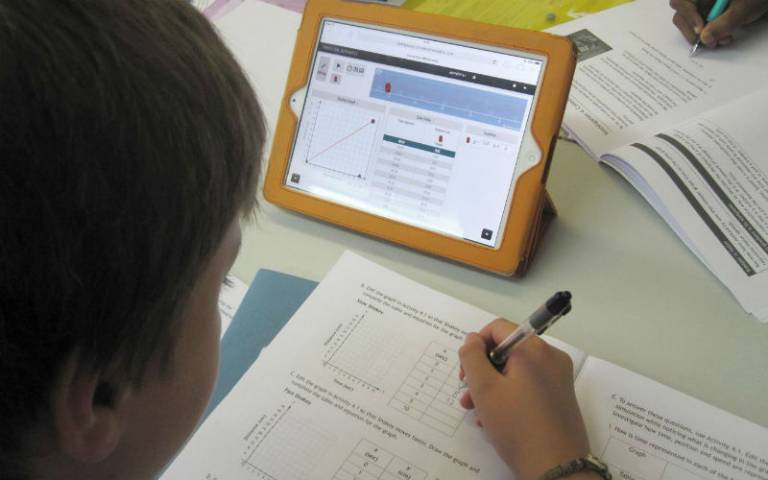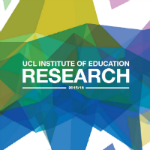Pupils missing digital innovations in maths education due to lack of support for teachers
7 September 2017

New digital technologies could be key to improving pupils' maths outcomes, provided teachers have access to training and support reveals new research from the UCL Institute of Education (IOE).
The two-year project funded by the Nuffield Foundation identifies a number of effective classroom practices and points to the necessary conditions for these to happen.
Researchers from the UCL Knowledge Lab gave 200 teachers from 42 London schools a tried-and-tested mathematics curriculum embedding dynamic maths technology (DMT) covering part of KS3. They also offered the teachers professional training.
Initially, the researchers found that project teachers were not using the DMT available to them because they felt they lacked training, knowledge and confidence. The report showed that despite adequate provision and web access, 37% of teachers had never used DMT in their lessons, with 45% using it occasionally, and only 9% using it regularly.
The researchers argue that DMT enables teachers to open up maths to Key Stage 3 pupils in both geometry and algebra and can present practical activities for pupils in realistic contexts. For example, pupils can learn to resize images for a digital magazine or understand the speed at which a digital game character moves. But, they warn, this will not happen automatically.
Speaking of the project, co-author Professor Dame Celia Hoyles said:
"Teachers use technology in other areas of their lives, so why don't they use it in maths teaching? It's not an issue with the children, who are of course confident using devices such as iPads, but due to a lack of adequate support for teachers, they are not making the most of these powerful tools for mathematics.
"DMT enables teachers and pupils to work together to paint a picture of patterns, shapes and structures they would not otherwise see, or build and recount the joy in describing what was previously hidden. These technologies help to illustrate solutions to mathematical problems, but also raise new challenges."
Following professional support, the researchers found that teachers were more confident in trying new teaching approaches that enabled them to really exploit the DMT with their pupils.
The DMT also helped teachers to explain difficult mathematical ideas to pupils by offering a stimulating visual environment that captured their interest and intrigue and encouraged them to use precise mathematical language.
Co-author Dr Alison Clark-Wilson added:
"We have known for some time that digital technologies are effective at improving engagement with maths among pupils. However, successfully integrating this kind of technology requires teachers to develop their own fluency with it, to find new ways of communicating the curriculum and to support pupils' technological experiences."
Cheryl Lloyd, Programme Head at the Nuffield Foundation said:
"This project suggests that tailored professional development is essential to teachers incorporating dynamic mathematic technologies in their teaching. Like the researchers, the Nuffield Foundation would like to see the use of digital technologies incorporated into initial training routes with further support provided for ongoing professional development. But we also know that in practice the severe shortage of maths teachers may make it difficult for them to access that professional development."
Media contact
James Russell
Email: james.russell@ucl.ac.uk
Tel: 020 3108 8516
Links
- Read the full report
- Read the executive summary
- UCL Knowledge Lab
- Professor Dame Celia Hoyles' Q&A
- Dr Alison Clark-Wilson's research profile
 Close
Close


